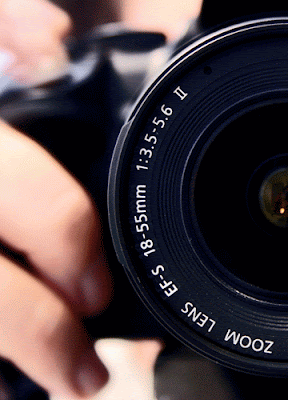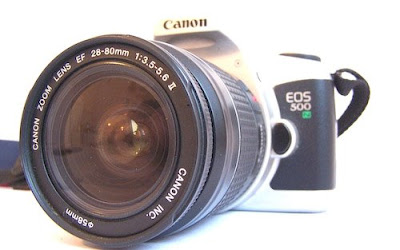
Tips for photographers
When you take hold of a digital camera, or even a traditional one, you constantly read or hear about "pixels". "This digital camera has 8.0 megapixels." "This one has 6.5 megapixels." So what are pixels exactly?
According to My Design Primer, PIXEL came from the first letters of "pix element"- pix meaning picture. It is the smallest unit on a display screen or monitor. By dividing the monitor into rows and columns of pixels, one may be able to see the pictures displayed on the monitors. The more pixels are squeezed into a monitor's surface, the smoother an image will appear on screen. They will appear like they're connected to your eye because pixels are usually so close together. An monitor with more pixels per inch (PPI) will be more expensive than a cheaper one.
(PPI) will be more expensive than a cheaper one.
The number of bits used to display each pixel determines how many colors a pixel can display. For example, a color monitor uses 8 bits per pixel in an 8-bit color mode. This makes possible the display of 256 (or 2 to the 8th power) colors on screen. Each pixel in a color monitor is made up of dots- red, blue, and green (RGB). These three dots are focused on the same spot when you look at it, creating a very smooth image. The quality of a monitor depends on its resolution. It indicates how many pixels it can display in a given area, as well as how many bits are contained in each pixel.
How to remove the red-eye in pictures
Somewhere somehow, red eyes seem to attachitself to our photographs. This makes our friends and loved ones look like the version of the Exorcist. To avoid the red eye from haunting us, Fireworks MX 2004 has a tool for removing this effect on photos.
The Red-eye Removal tool works by removing all the shades of red within a certain range that are within the selected area. These, in turn, will be replaced by a neutral color range of gray and black.
To remove the red-eye effect, Macromedia has provided the following steps for the Red-eye Removal tool:
1.Select the bitmap that exhibits the red eye effect. You can only use the Red-eye Removal tool on a bitmap, and not on a vector image.
2. Choose the Red-eye Removal tool from the Tools panel. This tool can be found in the Replace Color tool pop-up menu.
3. Click with the tool in the section that exhibits the red eye effect. The tool is instantly transforms the red shades, to the tolerances set in the Property inspector for the tool.
4. Since the tool only looks for red pixels, it should cleanly remove the red eye. Adjust the tolerance settings to fine tune the Red-eye Removal tool for your image.

When you take hold of a digital camera, or even a traditional one, you constantly read or hear about "pixels". "This digital camera has 8.0 megapixels." "This one has 6.5 megapixels." So what are pixels exactly?
According to My Design Primer, PIXEL came from the first letters of "pix element"- pix meaning picture. It is the smallest unit on a display screen or monitor. By dividing the monitor into rows and columns of pixels, one may be able to see the pictures displayed on the monitors. The more pixels are squeezed into a monitor's surface, the smoother an image will appear on screen. They will appear like they're connected to your eye because pixels are usually so close together. An monitor with more pixels per inch
 (PPI) will be more expensive than a cheaper one.
(PPI) will be more expensive than a cheaper one.The number of bits used to display each pixel determines how many colors a pixel can display. For example, a color monitor uses 8 bits per pixel in an 8-bit color mode. This makes possible the display of 256 (or 2 to the 8th power) colors on screen. Each pixel in a color monitor is made up of dots- red, blue, and green (RGB). These three dots are focused on the same spot when you look at it, creating a very smooth image. The quality of a monitor depends on its resolution. It indicates how many pixels it can display in a given area, as well as how many bits are contained in each pixel.
How to remove the red-eye in pictures
Somewhere somehow, red eyes seem to attachitself to our photographs. This makes our friends and loved ones look like the version of the Exorcist. To avoid the red eye from haunting us, Fireworks MX 2004 has a tool for removing this effect on photos.
The Red-eye Removal tool works by removing all the shades of red within a certain range that are within the selected area. These, in turn, will be replaced by a neutral color range of gray and black.
To remove the red-eye effect, Macromedia has provided the following steps for the Red-eye Removal tool:
1.Select the bitmap that exhibits the red eye effect. You can only use the Red-eye Removal tool on a bitmap, and not on a vector image.
2. Choose the Red-eye Removal tool from the Tools panel. This tool can be found in the Replace Color tool pop-up menu.
3. Click with the tool in the section that exhibits the red eye effect. The tool is instantly transforms the red shades, to the tolerances set in the Property inspector for the tool.
4. Since the tool only looks for red pixels, it should cleanly remove the red eye. Adjust the tolerance settings to fine tune the Red-eye Removal tool for your image.


No comments:
Post a Comment